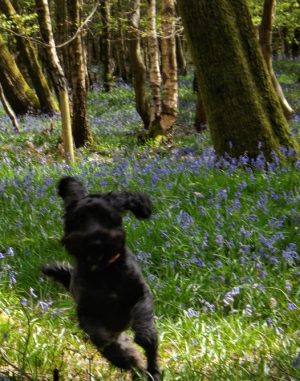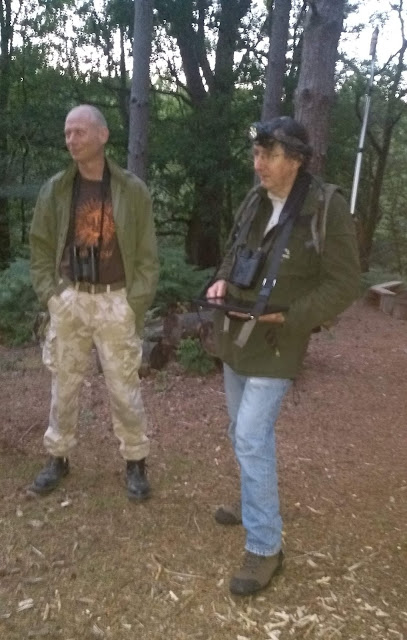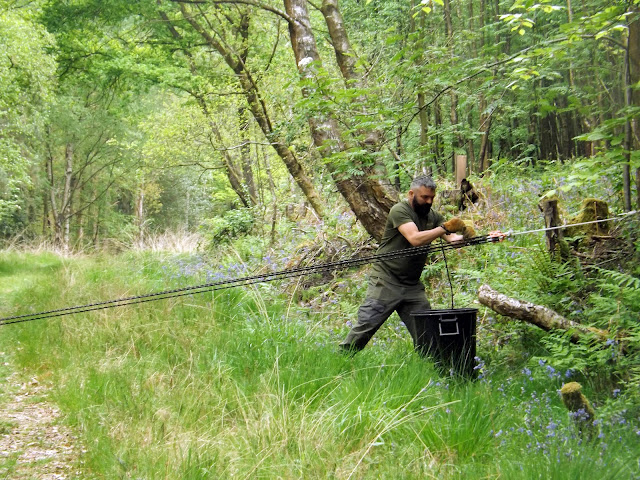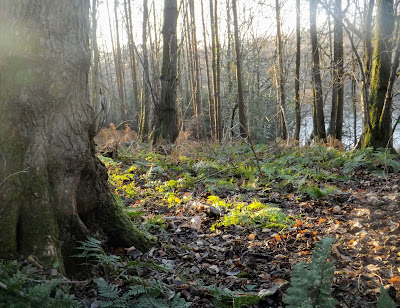The bluebells were beautiful again this year, such a fleetingly short season, starting towards the end of April and ending by the third week of May here at Old Copse. I somehow didn't get around to taking the obligatory shot of a sea of bluebells in among the beech trees, or even a picture of the very first solitary bluebell that had managed to reach within a few feet of the cabin, sure to be joined by others next Spring , so I'll put a few old ones in.
It feels ridiculously rewarding to witness the results of our work over the past year - the progress of bluebells being an easy improvement to monitor. I've been watching their onward march towards the cabin helped by the Scots Pine thinning operation in late 2015, and the strict removal of bracken each year. This is just one example that we're doing the 'right thing' in our approach to the restoration of Old Copse.
It has become increasingly popular to enjoy the Spring bluebells, whether in private or public woodlands, but it seems there still exists carelessness and a lack of understanding and respect for this wonderful sight.
When you see them each year, faithfully pushing through the old leaf litter in their hundreds, it may be hard to believe they're a fragile flower. Bluebells don't like change or disturbance, preferring ancient woods where the ground has lain undisturbed for years. Most bluebell woods open to the public have strictly designated paths or raised walkways to stop people trampling them.
Bluebell colonies take a long time to establish - around 5 - 7 years from seed to flower and can take years to recover after footfall damage. If a bluebell's leaves are crushed they die back from lack of food as the leaves cannot photosynthesize. Sadly many people don't know, or choose to ignore this , and also that it is against the law to pick, uproot or destroy bluebells.

So, it was dismaying, to put it mildly, to discover recently that not only had unannounced visitors trampled an area of bluebells which we had been encouraging for several years, but had lit a bonfire on top of the bulbs. This shows a regrettable disrepect for the habitat. Bluebells don't recover very quickly after that sort of treatment. Of course it isn't always possible to avoid every single bluebell in the wood, and we all sometimes tread on them. But we stop routine woodland springtime work in areas where there are growing colonies of wild daffodils, primroses, and bluebells, and we wouldn't dream of having parties, picnics, and bonfires in their midst.
Won't be seeing bluebells here again anytime soon
Plastic party litter by the Pond
This made us think about why anybody would do this. I can only think that they just didn't notice what was growing there, that their observational skills were lacking. The bracken fairy (i.e. me) had, over the years cleared bracken in the area to encourage ground flora, including bluebells. The visitors clearly thought it a nice spot for a party and a bonfire, to take selfies and pose for an Instagram post. However, they failed to really
look at their surroundings and notice that while they were enjoying the experience of being away from 6 foot tall bracken, and among the bluebells, they were also crushing and burning them. I can't imagine this was done deliberately - the site was tidied, with only a few bits of litter left to clear up - so it was doubtless just a failure to look and understand. Looking after the wood involves
noticing both the general and the details, how over time all the different living elements change, interact and compete. And once you notice these things, you understand better the impact of everything we do - big and small.
Some people might think that the loss of a few bluebells isn't important in the greater scheme of things .........Oh well, all we can do is continue with the work, protect Old Copse as much as we can, and maybe in the process, educate a few people too.


















































